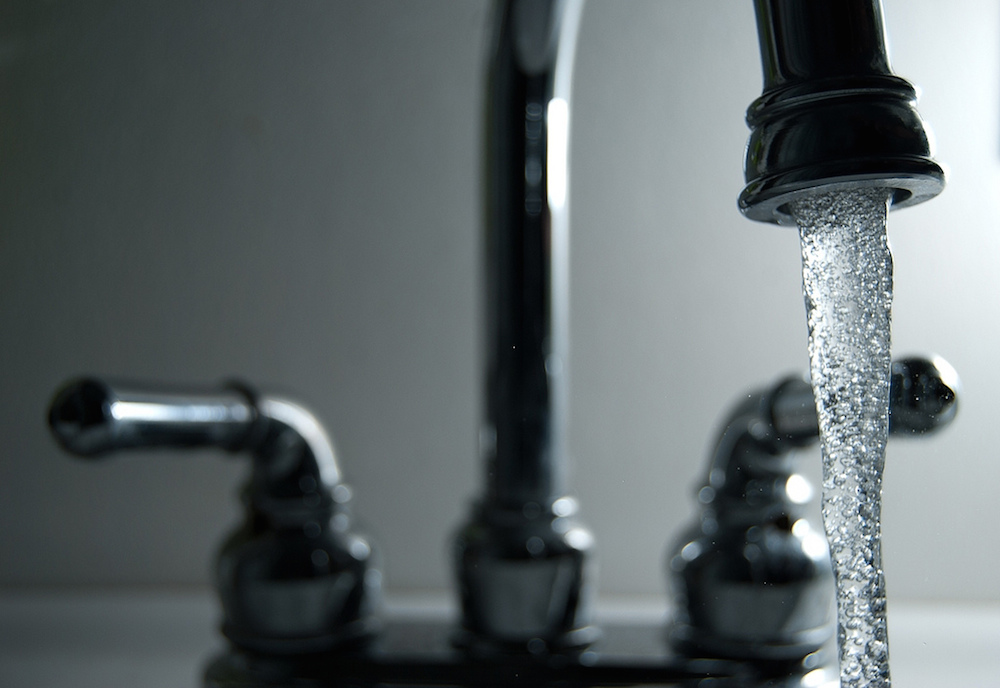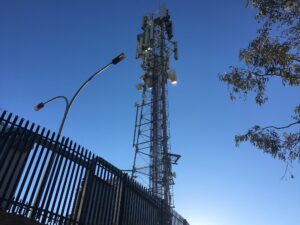Study Finds 94 Percent of U.S. Tap Water Contaminated With Plastic
An investigation by Orb Media finds that microplastic fibers exist in high levels in tap water around the world. (Steve Johnson / CC 2.0)
(Steve Johnson / CC 2.0)
A study led by the nonprofit Orb Media concludes that tap water in dozens of nations contains extremely high levels of plastic microfibers. The contamination rate was highest in the United States. The Guardian reports:
The US had the highest contamination rate, at 94%, with plastic fibres found in tap water sampled at sites including Congress buildings, the US Environmental Protection Agency’s headquarters, and Trump Tower in New York. Lebanon and India had the next highest rates.
European nations including the UK, Germany and France had the lowest contamination rate, but this was still 72%. The average number of fibres found in each 500ml sample ranged from 4.8 in the US to 1.9 in Europe.
The new analyses indicate the ubiquitous extent of microplastic contamination in the global environment. Previous work has been largely focused on plastic pollution in the oceans, which suggests people are eating microplastics via contaminated seafood.
Overall, more than 80 percent of the samples collected from five continents “tested positive for the presence of plastic fibers.”
The study says:
Scientists say these microscopic fibers might originate in the everyday abrasion of clothes, upholstery, and carpets. They could reach your household tap by contaminating local water sources, or treatment and distribution systems. But no one knows, and no specific procedures yet exist for filtering or containing them.
If plastic fibers are in your water, experts say they’re surely in your food as well — baby formula, pasta, soups, and sauces, whether from the kitchen or the grocery. Plastic fibers may leaven your pizza crust, and a forthcoming study says it’s likely in the craft beer you’ll drink to chase the pepperoni down.
It gets worse. Plastic is all but indestructible, meaning plastic waste doesn’t biodegrade; rather, it only breaks down into smaller pieces of itself, even down to particles in nanometer scale — one-one thousandth of one-one thousandth of a millimeter.
The Guardian reports that the source of this widespread contamination isn’t yet known, but scientists have some ideas. “The atmosphere is one obvious source, with fibres shed by the everyday wear and tear of clothes and carpets,” the Guardian says. “Tumble dryers are another potential source, with almost 80% of US households having dryers that usually vent to the open air.”
“We have enough data from looking at wildlife, and the impacts that it’s having on wildlife, to be concerned,” Sherri Mason, a microplastic expert and supervisor of the Orb study, tells The Guardian.
What effect could this plastic contamination have on humans? Anne Marie Mahon of the Galway-Mayo Institute of Technology, who conducted a separate study on contaminated tap water, says scientists “don’t know what the [health] impact is and for that reason we should follow the precautionary principle and put enough effort into it now, immediately, so we can find out what the real risks are.”
She explains that two possible health risks are associated with microplastics: nanoparticles, which could potentially penetrate organs, and toxic chemicals within plastics. Orb Media notes in the study that microplastics “have been shown to absorb toxic chemicals linked to cancer and other illnesses, and then release them when consumed by fish and mammals.”
Mahon says more research is needed to uncover the source of microfiber contamination and develop a solution to plastic waste.
“We need plastics in our lives,” Mahon says, “but it is us that is doing the damage by discarding them in very careless ways.”
Your support matters…
Independent journalism is under threat and overshadowed by heavily funded mainstream media.
You can help level the playing field. Become a member.
Your tax-deductible contribution keeps us digging beneath the headlines to give you thought-provoking, investigative reporting and analysis that unearths what's really happening- without compromise.
Give today to support our courageous, independent journalists.






You need to be a supporter to comment.
There are currently no responses to this article.
Be the first to respond.